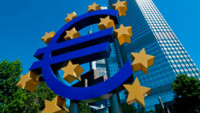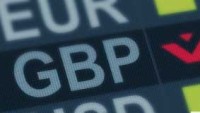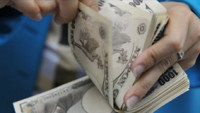 A slightly softer session yesterday for Europe’s markets, though theFTSE100 once again outperformed as oil prices continued to make headway gaining a foothold above the $50 a barrel level and closing at 10 month highs.
A slightly softer session yesterday for Europe’s markets, though theFTSE100 once again outperformed as oil prices continued to make headway gaining a foothold above the $50 a barrel level and closing at 10 month highs.
While oil inventories still remain at elevated levels continued supply disruptions in Nigeria, have sent output to a 20 year low and this is helping underpin prices. The third successive weekly draw in a row has also helped sustain the uptrend for oil prices which has been in place now for nearly 5 months.
With the US dollar also on the weak side there appears to be little in the way to stop the upward momentum behind the move higher in the oil price.
This US dollar weakness has also had another positive side effect, pushing US markets back close to their all-time highs, as the prospect of a US rate rise gets pushed further out towards the end of the year.
Concerns about the Chinese economy also weighed on sentiment after disappointing trade data while there still appears to be no signs of any significant pick up in inflationary pressures either as the latest May CPI data slipped back to 2%, while factory gate prices declined 2.8%. A slightly weaker CPI number reflected a lower than expected rise in food prices as evidence grows that the recent stimulus efforts of Chinese policymakers may well be wearing off.
The flip side of this US dollar weakness has been to push the euro back up once more, and in the process keep downward pressure on European markets, as a higher euro erodes the export competitiveness of European companies.
This is despite the ECB starting its long awaited corporate bond buying program yesterday with the intention of buying around €5-10bn a month of investment grade bonds from companies in the telecoms, insurance and utilities sectors, sending yields to record lows in an attempt to help boost inflation and spur credit growth in the European economy.
The ECB appears to think that by intervening directly in corporate debt markets that these companies will then go out and start investing the money in order to promote further growth in the euro area.
This conveniently ignores the fact that the ECB having already bought €1trn worth of European government bonds sending yields to new record lows yesterday and negative in a lot of cases, European companies can already borrow at record low rates but appear reluctant to do so.
No amount of cheap credit can solve that problem, without fixing the solvency problems in the European banking sector. There is also a wider concern in that the ECB could find itself with a conflict of interest, particularly where insurance companies are concerned.
It wasn’t that long ago prior to the financial crisis that bank corporate bonds were investment grade, and given the linkages in the financial system that nearly brought insurance giant AIG to its knees, you really have to question the wisdom of investing in a sector that firstly the ECB has oversight of given its Solvency 2 obligations, along with the precarious state of some of the European banking sector. Any new crisis in Europe’s banks could well ripple out through into the insurance sector particular given the well documented problems in Italy.
In essence the ECB will be purchasing the debt of companies that it has regulatory oversight of, which surely has to be a significant conflict of interest.
Furthermore given how small the European corporate bond market is the ECB could end up finding it problematic in extracting itself from a market that is already quite expensive and at record highs.
It will be interesting to see what ECB President Mario Draghi has to say this morning when he speaks at the Brussels economic forum at 8:00BST.
In the UK we rather surprisingly saw a big pick up in April industrial production data which appears to suggest that the UK economy isn’t suffering significantly from the current Brexit uncertainty, as the latest GDP estimate from the NIESR came in at 0.5%. We also get the latest trade data for April later today which is expected to show a deficit of -£3.55bn, a slight improvement from the -£3.8bn in March.
EURUSD – while above the 200 day MA at 1.1100, and trend line support from the December lows the bias remains for a move back towards the 1.1400 level and towards 1.1600.
GBPUSD – this week’s move up to 1.4660 appears to be keeping the volatility fairy happy which means that we continue to remain stuck in the broader range between resistance at 1.4700 and the recent May lows at 1.4330. Unsurprisingly there is a reluctance to push it strongly one way or the other.
EURGBP – the main resistance on the euro remains just above the 0.7900 level area at the May highs and 200 week MA at 0.7930. While below here the downside bias remains towards 0.7760. A fall back below 0.7720 retargets the 0.7640 area.
USDJPY – key support remains down at the 106.30 area but really needs to push back through the 108.50 area to stabilise, otherwise it remains looks vulnerable to a retest of the 105.50 lows.













